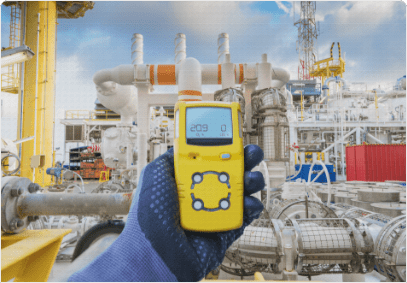Facts About Roar Solutions Revealed
Facts About Roar Solutions Revealed
Blog Article
Get This Report about Roar Solutions
Table of ContentsRoar Solutions - An OverviewOur Roar Solutions IdeasNot known Facts About Roar Solutions
In such an ambience a fire or surge is possible when 3 fundamental conditions are fulfilled. This is usually described as the "unsafe area" or "combustion" triangle. In order to safeguard installations from a possible surge a method of analysing and identifying a potentially unsafe location is called for. The function of this is to ensure the right option and setup of tools to inevitably prevent a surge and to ensure security of life.
(https://www.pageorama.com/?p=roarsolutions)
No devices needs to be installed where the surface temperature of the equipment is above the ignition temperature level of the given risk. Below are some usual dirt unsafe and their minimum ignition temperature level. Coal Dust 380C 225C Polythene 420C (melts) Methyl Cellulose 420C 320C Starch 460C 435C Flour 490C 340C Sugar 490C 460C Grain Dust 510C 300C Phenolic Resin 530C > 450C Aluminium 590C > 450C PVC 700C > 450C Residue 810C 570C The possibility of the threat being present in a focus high enough to cause an ignition will certainly differ from place to location.
In order to classify this risk an installment is separated into areas of risk relying on the quantity of time the hazardous is present. These areas are referred to as Areas. For gases and vapours and dusts and fibers there are 3 zones. Area 0 Area 20 A harmful atmosphere is very most likely to be existing and might exist for long durations of time (> 1000 hours per year) or even continually Area 1 Area 21 A hazardous ambience is feasible however not likely to be existing for extended periods of time (> 10 450 C [842 F] A category of T6 suggests the minimum ignition temperature is > 85 C [185 F] Dangerous location electrical equipment perhaps developed for use in higher ambient temperatures. This would certainly suggested on the score plate e.g. EExe II C T3 Ta + 60C( This indicates at 60C ambient T3 will certainly not be gone beyond) T1 T1, T2, T3, T4, T5, T6 T2 T2, T3, T4, T5, T6 T3 T3, T4, T5, T6 T4 T4, T5, T6 T5 T5, T6 T6 T6 A T Class ranking of T1 means the maximum surface temperature level generated by the instrument at 40 C is 450 C. Assuming the linked T Course and Temperature level ranking for the equipment are ideal for the area, you can constantly make use of a tool with an extra strict Department rating than required for the location. There isn't a clear solution to this inquiry. It really does depend on the kind of devices and what repair services need to be performed. Tools with specific test treatments that can't be performed in the area in order to achieve/maintain 3rd party ranking. Should come back to the manufacturing facility if it is before the devices's solution. Field Repair By Authorised Employee: Complex testing may not be called for nonetheless certain procedures might require to be complied with in order for the devices to maintain its third party ranking. Authorized employees should be employed to perform the work correctly Repair service need to be a like for like substitute. New element have to be considered as a straight replacement requiring no unique screening of the tools after the fixing is complete. Each tool with a hazardous rating should be evaluated independently. These are described at a high level listed below, however, for even more in-depth info, please refer directly to the standards.
Getting My Roar Solutions To Work
The devices register is an extensive data source of equipment documents that consists of a minimum collection of fields to recognize each product's place, technological parameters, Ex-spouse category, age, and ecological information. This details is essential for monitoring and taking care of the devices effectively within unsafe locations. In comparison, for routine or RBI tasting inspections, the quality will certainly be a mix of Comprehensive and Close examinations. The ratio of Detailed to Close assessments will certainly be determined by the Devices Risk, which is examined based on ignition risk (the possibility of a resource of ignition versus the probability of a combustible environment )and the harmful area category
( Area 0, 1, or 2). This variant will additionally influence the resourcing needs for job preparation. Once Lots are specified, you can establish tasting strategies based on the example dimension of each Great deal, which describes the number of random devices things to be checked. To figure out the called for example size, 2 facets need to be assessed: the dimension of the Whole lot and the category of inspection, which shows the level of initiative that need to be applied( decreased, normal, or increased )to the inspection of the Great deal. By integrating the category of inspection with the Lot dimension, you can then establish the suitable denial standards for an example, implying the permitted number of defective items discovered within that example. For even more information on this procedure, please refer to the Energy Institute Standards. The IEC 60079 standard advises that the optimum period between evaluations need to not exceed 3 years. EEHA evaluations will certainly likewise be conducted outside of RBI projects as part of scheduled maintenance and devices overhauls or repair work. These examinations can be attributed towards the RBI example sizes within the affected Lots. EEHA inspections are carried out to determine mistakes in electric devices. A heavy racking up system is vital, as a single item of devices may have numerous faults, each with differing degrees of ignition threat. If the combined score of both examinations is much less than two times the fault rating, the Lot is considered acceptable. If the Whole lot is still taken into consideration undesirable, it has to undertake a complete evaluation or validation, which may activate more stringent evaluation protocols. Accepted Great deal: The sources of any kind of faults are recognized. If a common failure setting is found, additional devices may call for maintenance. Mistakes are categorized by severity( Safety and security, Honesty, Housekeeping ), making certain that immediate problems are evaluated and resolved without delay to alleviate any influence on safety or procedures. The EEHA data source should track and videotape the lifecycle of mistakes in addition to the corrective actions taken. Executing a durable Risk-Based Examination( RBI )strategy is vital for guaranteeing conformity and safety and security in managing Electrical Devices in Hazardous Areas( EEHA) (Roar Solutions). Automated Mistake Rating and Lifecycle Administration: Effortlessly manage mistakes and track their lifecycle to boost evaluation accuracy. The introduction of this support for risk-based examination further enhances Inspectivity's position as a best-in-class remedy for governing conformity, in addition to for any type of asset-centric evaluation usage situation. If you want finding out more, we invite you to request a presentation and discover how our option can transform your EEHA monitoring procedures.
An Unbiased View of Roar Solutions

In terms of explosive risk, a dangerous area is a setting in which an eruptive environment exists (or may be expected to be existing) in quantities that require special safety measures for the building and construction, setup and use tools. eeha training. In this short article we explore the difficulties encountered in the work environment, the danger control measures, and the needed proficiencies to work securely
These compounds can, in specific problems, form explosive ambiences and these can have major and tragic effects. Many of us are acquainted with the fire triangle eliminate any kind of one of the three elements and the fire can not occur, but what does this mean in the context of dangerous locations?
In many circumstances, we can do little regarding the levels of oxygen in the air, however we can have substantial influence on sources of ignition, for instance electric equipment. Harmful locations are documented on the unsafe area classification illustration and are determined on-site by the triangular "EX LOVER" sign. Here, among various other vital details, areas are split into 3 types depending upon the threat, the probability and period that an eruptive atmosphere will certainly exist; Zone 0 or 20 is considered one of the most unsafe and Area 2 or 22 is deemed the least.
Report this page